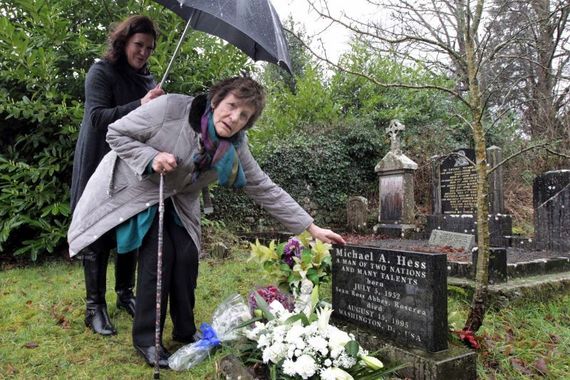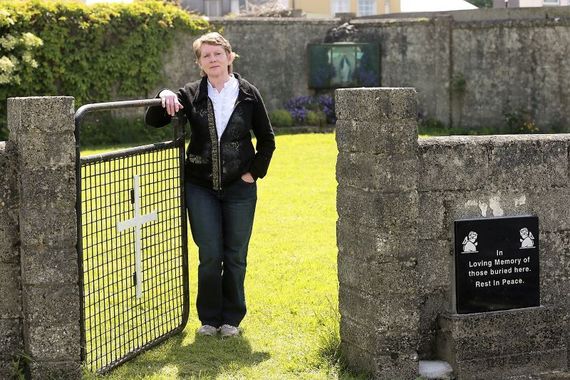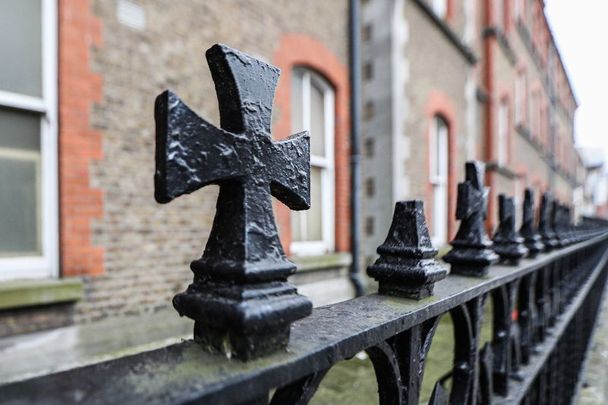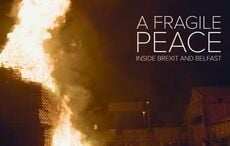Anyone who was there will remember them - the women Ireland decided not to see; those lay women who spent their lives somehow unbreakably attached to an Irish convent or laundry; the thousands of unfortunate souls who seemed to cook and clean their lives away in exchange for a simple bed and board, if that was indeed the exchange.
But nothing is as glaring as a non-person. No one sticks out more than someone that society says is beneath your notice. Or at least, that's how they stuck out to me. I remember wondering about all these now elderly women who seemed to live in their overalls, who'd put a simple raincoat over them on the very rare days you'd see them out and about in town.
This was still going on into the 1990s, so it's not quite ancient history. We are not quite the progressive haven that we think we are in Ireland yet.
We certainly haven't seriously reckoned with the terrifying theocratic gulag we created for Irish women for most of the 20th century. And the few scripted apologies we have heard from prominent public figures need to be considered alongside the foot-dragging over reparation payments still unpaid to the victims of those times and attitudes.
The church, which has often stonewalled historic investigations and repayments, hasn't covered itself with much Christian kindness or compassion, more often acting more like an insurance company facing financial exposure rather than an entity long tasked with saving souls.
But the thing that I still marvel at is the sheer ruthlessness of it all. Church authorities selling Irish infants for profit to deep-pocketed overseas markets for decades, letting the less thriving ones fail and pass away and then burying them in unmarked graves - including septic tanks - to be ignored and forgotten.
Forcing generations of unwed mothers to surrender their newborn infants, breaking the most primal mother-child bond, speaking out of both sides of their mouths from the pulpit, for most of the century. Leaving the mothers bereft, unable to trace what had happened to their infant, then profiting off their misery and cruelly charging them for the theft.
Remember brave Philomena Lee's 50-year search for her son which the nuns who originally trafficked him refused to aid, until at last she discovered that he had worked for the Reagan and Bush administrations as a lawyer.
Dying at 43 due to complications from an AIDS-related illness, he had requested to be buried at Roscrea, the Co Tipperary convent from which the nuns had originally sent him overseas.
It was his last hope that his birth mother would one day find him. He never gave up hope of her finding him and eventually she did, but far too late for a longed-for reunion as it turned out. Instead of finding her son, she found his headstone.

January 2014: Philomena Lee at her son Anthony Lee's (Michael Hess) grave Sean Ross Abbey, Roscrea, Co Tipperary. (RollingNews.ie)
Meanwhile, an Irish government-appointed director will soon oversee “one of the most complicated forensic excavations in the world” at the former Mother and Baby's Home in Tuam Co Galway, where the bodies of almost 800 babies will be exhumed.
It's a crime scene, obviously. But it's also a reminder of the steep cost of the cruel conservative theocracy we allowed the republic to become after independence: a place where ill-favored babies, hundred of them, over decades, were dumped in a sewage tank.
Soon the hard work of identifying each infant from their DNA will begin, overseen by an Irish government that once looked the other way as these poor children vanished.
“We thought the (investigation) would happen in 2017 when they knew it was the home babies that were there,” local historian Catherine Coreless, whose research single-handedly unveiled the scandal, told the press.
“I felt it would happen this time but still you have a niggling doubt because there have been a lot of lame excuses over the years. They are going in there, anyway, finally, and it is a great relief to know that this is happening,” she concluded.

Catherine Corless at the site of the Tuam Mother & Baby Home in 2014. (RollingNews.ie)
The Tuam story first broke in 2014. It's the middle of 2023 now. No one could accuse the government of acting hastily to uncover the truth or heal the lasting wounds of that place and time.
But if you don't face up to the past you are doomed to recreate the conditions and attitudes that made it possible. That's the danger we are still facing.
As the far right tries to isolate and menace a new generation of undesirables, this time going after the worldwide LGBT community, a new and surprisingly profitable climate of hostility is being created and we should see what is really at stake: power, position, and their bottom line.
Hatred and hostility have always been a for-profit enterprise. What begins as morals ends up as money. People will pay others to purge their societies of undesirables they are taught to despise, no matter what the cost.
That's the lesson of our recent history, the question is will we do it all over again?




Comments